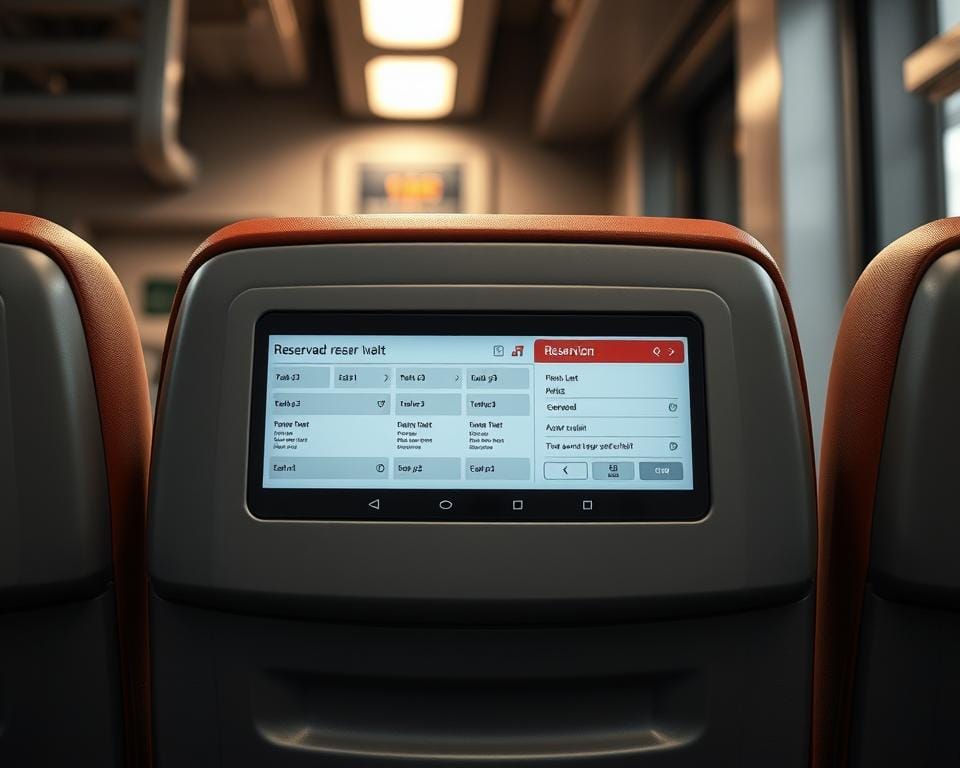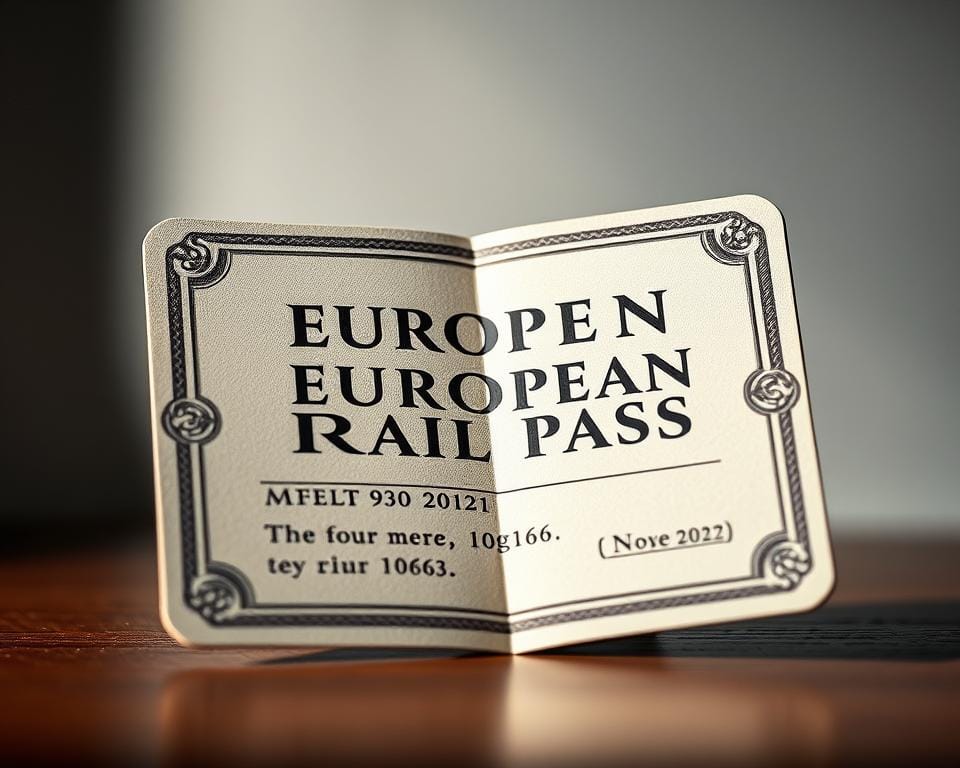What if your dream European adventure costs less and feels more authentic than you’ve imagined? The secret lies in unlocking the full potential of a rail travel document that opens doors to 33 countries. I’ve navigated this system for years – let me show you why it’s the ultimate hack for savvy explorers.
Modern rail tickets have evolved far beyond paper slips. Today’s digital options let you skip queues with smartphone scans, blending flexibility with old-world charm. Whether you’re chasing midnight sunrises in Scandinavia or coastal views along the Mediterranean, the right strategy turns trains into your personal travel concierge.
Through trial and error, I’ve discovered how to avoid rookie mistakes that drain budgets. From selecting the ideal validity period to decoding seat reservation quirks, this guide transforms overwhelming choices into clear decisions. You’ll learn to balance spontaneity with smart planning – because real freedom comes from knowing the rules before you break them.
Key Takeaways
- Unlimited journeys across 33 countries with one digital ticket
- Flexible options from 4-day trips to 3-month adventures
- First Class upgrades available for enhanced comfort
- Continuous or travel-day validity to match your pace
- Essential reservation tips for popular routes
Understanding Rail Pass Options
Choosing the right rail ticket can make or break your European journey. During my travels, I’ve learned that matching your pass type to your itinerary is crucial for both savings and convenience. Let’s break down your choices without the jargon.
Global Pass vs One Country Pass
The Eurail Global Pass became my best mate during a 3-week trip across six nations. Covering 33 countries, it’s ideal for cross-border adventures – think Paris croissants one morning and Berlin currywurst the next. But when I focused solely on Switzerland, their national pass offered better value with bonus perks like mountain transport.
| Feature | Global Pass | One Country |
|---|---|---|
| Coverage | 33 countries | Single nation |
| Best For | Multi-destination trips | Deep exploration |
| Extras | Pan-European network | Local discounts |
Flexible and Continuous Options
I once wasted travel days by not understanding validity types. Flexible passes let you pick travel dates within a month – perfect for city-hopping with rest days. Continuous passes work like unlimited travel subscriptions for non-stop explorers. Pro tip: Match your pace – slow travellers save more with flexible options, while go-getters benefit from continuous validity.
How to Use a Rail Pass in Europe
Mastering your rail document transforms European adventures from stressful to seamless. I still remember fumbling with mine at Milan Central – now I breeze through stations like a local. Here’s how to wield yours like a pro.
Activation comes first. Always date-stamp before your initial journey. I learned this the hard way when a German conductor nearly fined me for an unvalidated pass. Digital versions auto-activate, but physical ones need manual marking.
Platform navigation becomes easier when you:
- Check departure boards for your train number
- Look for carriage class indicators (1st/2nd)
- Confirm reservation requirements with station staff
Conductor interactions vary by country. French inspectors typically scan QR codes, while Italian ones prefer physical passes. Keep both digital and printed copies handy – my folded paper backup saved me when my phone died near Salzburg.
| Aspect | Rail Pass | Standard Ticket |
|---|---|---|
| Coverage | 33 countries | Single route |
| Flexibility | Any train | Fixed time |
| Reservations | Sometimes needed | Included |
| Cost Structure | Upfront | Per journey |
Seat etiquette matters. Unreserved carriages mean claiming spots quickly – I stake my territory with a scarf. For multi-leg trips, note connection times. Swiss trains wait for no one, but Spanish ones often run late. Adapt your pace accordingly.
Unexpected costs? Some scenic routes like Glacier Express require supplements. Always ask about extras when booking sleepers or premium trains. With these tricks, you’ll glide through borders like the seasoned explorers do.
Choosing the Right Rail Pass for Your Journey
Picture this: You’re sipping espresso in Rome when inspiration strikes – why not catch the evening train to Venice? The right travel document turns these whims into reality without budget nightmares. Let’s find your perfect match through smart self-assessment.

Assessing Your Travel Needs
Start by sketching your trip rhythm. During my Swiss alpine adventure, I saved £120 by choosing a national pass over individual tickets – but only because I planned three mountain journeys. Three or more train days usually make passes worthwhile. City-hoppers benefit most, while beach-bound travellers might prefer point-to-point tickets.
Ask yourself:
- Will I change locations every 2-3 days?
- Do I value spontaneity over rigid schedules?
- Are cross-border journeys essential?
My golden rule? Calculate individual ticket costs for your must-do routes first. Passes shine when this total exceeds their price. Don’t forget hidden perks – I once scored free ferry crossings in Greece with my rail document.
| Scenario | Pass Benefits | Ticket Benefits |
|---|---|---|
| Multi-country trips | Borderless travel | N/A |
| Short stays | Limited value | Cost-effective |
| Flexible plans | No rebooking fees | Fixed schedules |
Time-conscious explorers should prioritise passes – missing a train costs nothing when the next one’s included. Slow travellers might prefer mixing passes with regional tickets. Remember, the best choice liberates your journey, never complicates it.
Planning Your Travel Days and Itineraries
Imagine unlocking 24-hour train marathons that let you breakfast in Brussels and sunset in Bordeaux – all under one travel day. The secret lies in mastering the clock, not just the map. I once squeezed three scenic journeys into a single day by understanding these rules inside out.
Your travel day runs midnight to midnight, regardless of when you board. That 6am express to Munich? It shares the same travel day slot as your 10pm local service. My favourite trick: schedule long-distance morning trains followed by afternoon regional connections. You’ll cover twice the ground without extra costs.
Night Trains: The Double-Edged Sword
Boarding a sleeper service at 21:00 on Monday? If you arrive Tuesday morning, that’s two travel days used. I learnt this the hard way en route to Venice. Now I only book night trains when crossing into new countries – maximising both rest and coverage.
| Scenario | Travel Days Used | Smart Alternative |
|---|---|---|
| Paris → Nice (day trip) | 1 | Add Marseille stopover |
| Berlin → Prague (overnight) | 2 | Take late afternoon train |
| Barcelona → Madrid → Seville | 1 | Book connecting services |
Buffer days become your best mates. After pushing four cities in three days, I always schedule a rest day. Your pass still allows local trams and metros – perfect for light exploration without burning travel days.
Pro tip: Group neighbouring countries. My Rhine Valley day covered Germany, France and Switzerland using one travel day. Check timetables for cross-border regional trains – they’re gold dust for passport-stamp collectors.
Activating Your Rail Pass
Unlocking your rail document feels like receiving a golden ticket – but only if you activate it correctly. I once nearly missed a Barcelona-bound train because I forgot this crucial step. Let’s ensure your adventure begins smoothly.
Steps to Activate Your Eurail or Interrail Pass
Digital activation takes 90 seconds. Open your app, enter your passport number, and pick a start date. Physical passes require visiting a station counter – I always do this while waiting for my first train. Remember:
- Choose your first travel date carefully
- Double-check passport details match your ID
- Keep activation receipt until journey completion
Managing Start Dates and Validity
Your pass becomes valid from midnight on your chosen start date. I often activate mine at Heathrow Airport while waiting for luggage. The 11-month window lets you:
- Book early during sales
- Adjust plans for weather or events
- Combine multiple trips
| Activation Method | Deadline | Key Benefit |
|---|---|---|
| Mobile App | Any time | Instant confirmation |
| Station Counter | Before boarding | Staff assistance |
Changed your mind? You get one free date adjustment before first use. After activation, validity runs consecutively – so don’t start early unless you’re ready to travel. My pro tip: Align your start date with arrival morning to maximise day one adventures.
Reserving Seats and Managing Extra Costs
Ever boarded a train only to find your ‘flexible’ seat taken? Reservations transform from optional to essential depending on your route. Let’s crack the code on when to book ahead and how to handle those sneaky extra fees without frustration.

When Reservations Become Non-Negotiable
High-speed and scenic routes demand bookings. I learnt this lesson the hard way when turned away from the Bernina Express. These services typically require reservations:
- Eurostar (London-Paris/Brussels)
- TGV (France’s bullet trains)
- Glacier Express (Swiss Alps)
- Frecciarossa (Italian high-speed)
Spain’s AVE and Germany’s ICE trains often need reservations during peak seasons. Pro tip: Check timetables for ‘compulsory reservation’ notes – they’re your red flags.
Smart Strategies for Reservation Fees
Costs stack up quickly – my Milan-Venice booking cost €13, while Paris-Nice set me back €20. Use these hacks:
- Book through rail company apps for lower fees
- Group multiple reservations in one transaction
- Travel off-peak to avoid surcharges
| Country | Reservation Needs | Average Cost |
|---|---|---|
| France | Mandatory | €10-€20 |
| Germany | Rarely needed | €0-€5 |
| Italy | Common | €10-€15 |
Central European trains often let you board without bookings – perfect for spontaneous explorers. My golden rule? Budget €15 daily for reservations when crossing France, Spain or Italy. Your future self will thank you when sipping espresso in that guaranteed window seat.
Navigating the Rail Planner App
Lost in a maze of timetables? The Rail Planner app becomes your digital compass across Europe’s rail networks. During my Swiss alpine misadventure, this tool saved me from missing three connections in one afternoon. Let me show you how to harness its full potential without tech headaches.
Exploring Key Features
Real-time updates transform stress into confidence. I once rerouted around a German rail strike while queuing for coffee. The app’s colour-coded trains show:
- Mandatory reservation routes (red alerts)
- Possible connections (amber warnings)
- Freestyle journeys (green lights)
My favourite trick? Starring frequent routes creates a personalised timetable. The pass management section tracks remaining travel days – crucial when extending trips last-minute.
Using the App Offline
No signal in the Austrian Alps? No problem. Download journeys while connected – I save mine each morning over breakfast. Offline mode shows:
| Online Features | Offline Access |
|---|---|
| Live departure updates | Saved timetables |
| New route searches | Pre-loaded journeys |
| Pass activation | Travel day counter |
Remember: Add new trips before losing Wi-Fi. When my phone died near Innsbruck, a screenshot of my itinerary sufficed for conductors. Always keep analogue backups – pens still work wonders on napkins!
Utilising Night Trains in Europe
Travelling through Europe’s moonlit landscapes offers more than just starry views – it’s a savvy strategy for stretching your budget. I’ve mastered overnight routes that slash accommodation costs while devouring miles. Here’s how to ride the rails after dark without losing sleep over logistics.
Maximising Your Travel Day with Night Journeys
Timing is everything. Boarding at 22:00 on Tuesday? If you arrive Wednesday morning, that’s two travel days used. I plan these journeys when crossing into new countries – you’ll wake up fresh with a new destination outside your window.
Reservations become non-negotiable here. Most overnight services offer:
- Basic couchettes (6-bunk compartments)
- Private sleepers (1-3 beds)
- Deluxe cabins with ensuite showers
| Class | Cost Range | Privacy Level |
|---|---|---|
| Couchette | €20-€50 | Shared (4-6 people) |
| Sleeper | €60-€150 | Private |
| Deluxe | €200+ | Suite with amenities |
Pack light – cabins have minimal storage. I always bring earplugs and a silk eye mask. Pro tip: Book early through rail company websites for better rates. Austrian Nightjets often include breakfast, while Swedish routes offer free Wi-Fi.
My favourite routes? The Berlin-Vienna sleeper connects two capitals effortlessly. For coastal magic, try the Paris-Nice overnight service. With these tricks, you’ll arrive rested and ready to explore – no hostel bill required.
Preparing for Peak Travel Periods
Europe’s summer sun turns train stations into bustling hubs where spontaneity meets strategy. Having navigated July crowds from Paris to Prague, I’ve discovered clever ways to dodge the chaos while keeping journeys joyful. Let’s transform busy periods from stressful to manageable.
June through August sees reservation demands spike on popular corridors. Routes like Amsterdam-Berlin or Barcelona-Madrid fill weeks ahead during school holidays. My golden rule? Book seats 60-90 days early through rail company websites – you’ll bypass third-party fees and secure better options.
Tips for Managing Crowded Routes
Flexible timing beats fixed schedules during peak months. I once swapped a packed 09:00 Eurostar for an 11:30 service simply by checking the app while queueing. Consider these adjustments:
- Travel mid-week when business commuters thin out
- Opt for early morning or late evening departures
- Use regional trains for less congested alternatives
| Peak Period | Smart Alternative | Savings Potential |
|---|---|---|
| Christmas markets | Visit late November | 20-30% on reservations |
| Summer holidays | Travel May/September | 50% fewer tourists |
| Oktoberfest | Base in Nuremberg | Free regional trains |
Always have backup plans. When the Venice Simplon-Orient-Express sold out, I took a daytime regional train through Dolomite villages – an unexpected highlight. Budget £10-£15 extra daily for peak season reservations, and remember: slower trains often reveal Europe’s hidden charms.
Understanding Country-Specific Guidelines
Your home country holds surprising rules that could reshape your rail adventure. While planning my first Interrail trip, I nearly missed a crucial detail – some passes can’t be used where you live. Always check local guidelines before plotting routes, especially if crossing into neighbouring nations.
Local Rules in Your Country of Residence
Here’s the twist: your Interrail Pass isn’t valid in your nation of residence. I discovered this when almost boarding a London-Edinburgh train with my global pass. The system assumes you’ll explore beyond home turf. Your country is determined during checkout, printed under ‘Details’ on the pass itself.
Need to travel domestically? Combine passes. I once used a BritRail ticket for UK journeys alongside my Interrail document. This approach lets you hop between regions without losing international flexibility. Always double-check your pass details – that £5 supplement beats an awkward conductor chat!

